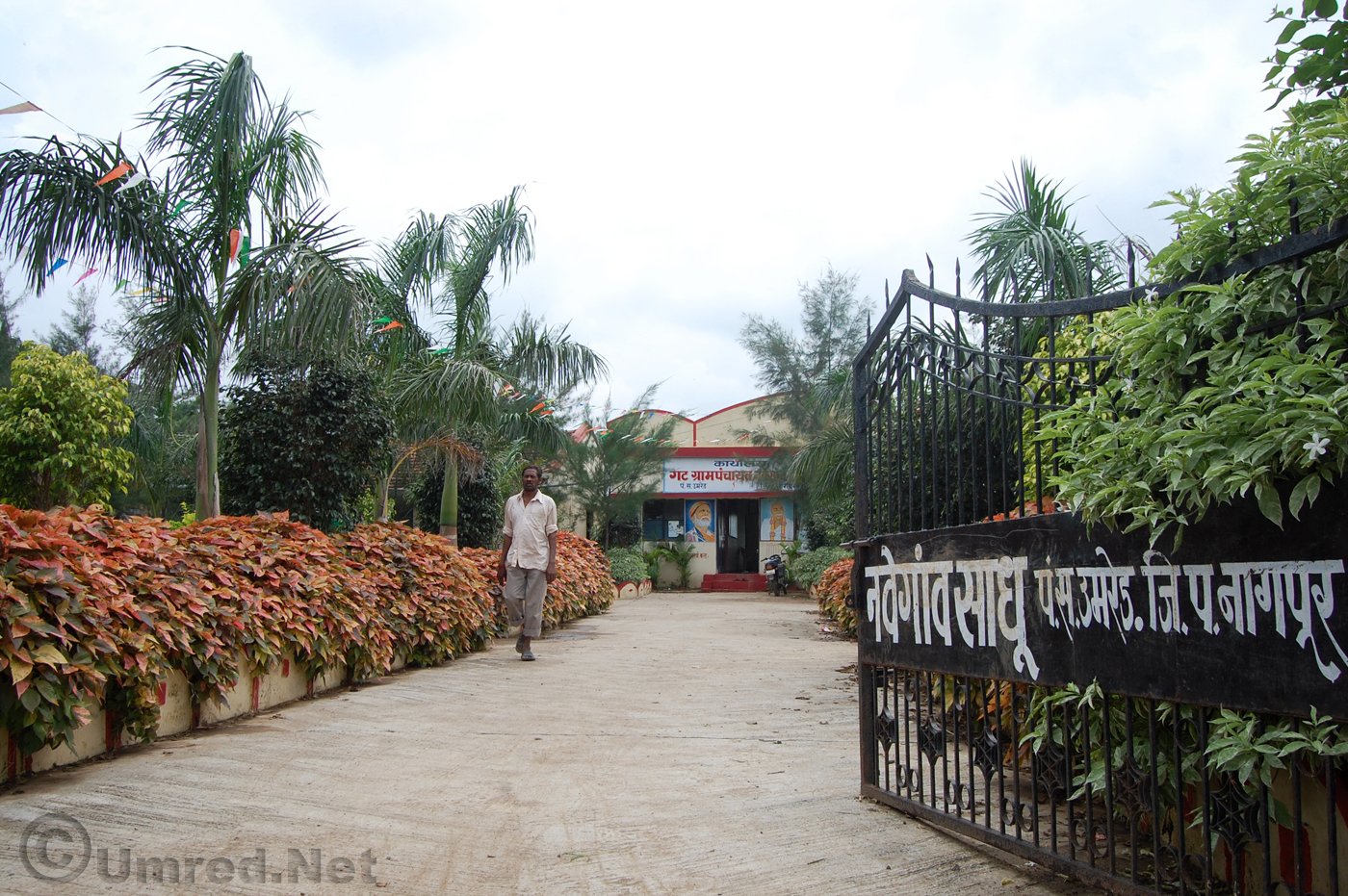What do you picture, when you think of a typical village in India?
Poverty, ignorance, illiteracy, superstitions, people living under unhygienic conditions, lack of basic necessities… True?
And what does it say about India, knowing that more than 65% of people in India live in these villages?
If you think you already know where I am going with this – stop thinking and look.
The picture you see below is of a village, about 5 kms from the town Umred and has a population of 600.
Most homes in this village (more than 90%) have proper sanitation. And, I can tell you that, 90% figure is better than what a typical village can talk about in this country. The situation is probably better than how it is in Mumbai, one of the biggest cities in India, where most slum dwellers have to defecate out in the open with not even vegetation for privacy.
Back in the village, residents are provided with drinking water from the community tank, proper roads, a health centre where a Doctor pays regular visits.
You think that is good enough? It gets better.
Below is another picture of the village school. Its agenda is to provide to every child, education and a learning space that is clean, safe and secure.
From their early years, these students are instilled with a sense of personal responsibility. They are also made aware of the importance of investing in kindness to each other and to the environment.
Each student contributes to the “Oxygen park” in the area by planting his or her own holy basil Ocimum tenuiflorum, (also tulsi, tulasī) . These kids are also responsible for the care of their plants. (Tulsi is a plant that gives out oxygen 20 hours a day and ozone for 4 hours unlike most plants that give out carbon dioxide at night).
[singlepic id=103 w=520 h=440 float=center]
Now THAT is as good as it gets. You think? Read some more…
The first thing I noticed upon entering the village, was different writings on walls of the houses, fences, buildings. Writings presented with pictures of the leaders and other drawings to motivate, inspire and create awareness; which I noticed also inspired art and creativity.
As Mr. Kishore Nandurkar from the village gram panchayat said – “every wall in the village speaks to you”
These writings are in Marathi, local language of the place. (Sorry if you do not understand the language, too many to translate here)
[singlepic id=104 w=520 h=440 float=center]
I was pleasantly surprised to see a piece of writing about the discovery of penicillin by Sir Alexander Fleming on one of the walls. It was good to know that this village did not stop at the national boundaries in its quest to seek knowledge.
Do you think I am stretching it a bit?
I have not even started talking on their worm composting system and their effort to promote organic farming.
I have not discussed how some houses in this village have been designed and built with rooftop rainwater harvesting system.
Or their use of solar street lights.
And did I mention that the village regularly organizes events for villagers on topics such as “healthy diet for healthy life” to educate the villagers?
And most importantly, I have not mentioned what makes these villagers special, yet.
[singlepic id=101 w=520 h=440 float=center]
As I see it, it has to be their ATTITUDE!
The initiative, I have been told started some 10 years ago by the people from this village – Navegaon Sadhu, Umred. They did not wait for the government funds or budget; they just started working on it with the guidance of Mr. Sanjay Waghmare and a few other seniors of the village.
What was put forth before these people probably echoed in them, and they followed. Every villager volunteered, including the school kids – sweeping the roads in a drive to keep their village clean and adults helping each other build, develop and maintain.
Indian Government allows funds to the villagers for sanitation, to end the practice of open defecation but this fund is hardly enough to build even a basic toilet. However, these villagers found a solution and made sanitation for all, a possibility. They volunteered to help each other with the installation, so that all of the fund money could be used for purchasing raw material for the project. It is my understanding that through their willingness to help themselves and others these people discovered a new way of living.
Now, if you think that these villagers are not THAT impressive after all because they won’t be able to hold a conversation with you on string theory or phybots or a gazillion iphone applications, then you are probably right.
Having said that, they might still be able to impress you by telling something about your personality based on the sun’s apparent position relative to arbitrarily defined constellations at the time of your birth. (By that, I mean your horoscope and that line is taken right out of the “The Big Bang Theory”).
Anyway, the important thing is that they know, what they need to know. They know the power that comes with taking personal responsibility.
And, the point of this article is to show that the real development of India starts with small actions – from here, from a village such as this, from the ground up. Not just by building huge malls and investing in infrastructure but with investing in developing the minds – the rest just follows.
Think about it. 🙂
